The Fixed Coils In Soundsmith's Paua Mk II Phono Cartridge Will Move You
a cartridge caught in the electrical twilight zone between MM and MC
Moving Iron is the Rodney Dangerfield of cartridge technology. It gets no respect. Analog enthusiasts regularly debate “moving coil or moving magnet?” but rarely is moving iron part of the discussion. It’s true that “moving iron” is a type of moving magnet cartridge, but companies that manufacturer them, (Grado, Goldring and Soundsmith are today’s main players, though in the past ADC, Sonus, B&O and probably others did as well) make it a point to distinguish their tech from traditional moving magnet designs wherein a relatively heavy magnet at the back end of the cantilever moving in proximity to fixed coils produces a varying magnetic field that induces in the coils an electrical flow.
Moving iron cartridges, like MMs, have fixed coils and fixed magnet systems too, but not attached to the inside end of the cantilever where the high magnet mass slows down responsiveness—one reason it’s a sonic revelation when listeners move from MM to MC cartridges. Coils of wire are much lighter than magnets.
In moving iron designs (also known as variable reluctance), the magnet system is also fixed in proximity to the fixed coils. A small piece of magnetizable iron attached to the internal end of the cantilever does the moving—it is far lower in mass than either magnets or coils.
As the iron moves closer to the magnet’s pole piece, it becomes temporarily magnetized, which generates in the coils a voltage. As the moving iron moves in the other direction, responding to groove modulations, it first becomes demagnetized (as it moves away from the magnet’s influence) and then again magnetized, with polarity reversed.
Moving coil designs can use very powerful fixed magnets and few coil turns. Lower mass, yes, but also lower output, which requires greater amplification and lower noise electronics (leaving aside current amplification circuits that rely upon low internal impedance to produce voltage). Moving coils mean that the wire going to the cartridge pins must be extremely thin (and fragile) to remain flexible and avoid interfering with coil movement.
Keep in mind that none of this adequately describes the LCR (inductance, capacitance, resistance) electrical circuit created in conjunction with the associated phono preamplifier and the various factors (coil turns, magnetic flux, moving iron size) that each design must address to make the circuit work properly in a linear, extended manner and how best to deal with each design’s resulting inductance, capacitance, and resistance.
The basics are: more coil turns, the higher will be inductance, impedance and capacitance. Thus, moving magnet cartridges, which have many coil turns in order to increase output while using lower mass magnets are nominally resistively loaded at 47kOhms and are capacitance-sensitive and must be carefully capacitive loaded to avoid high frequency roll-off in the audible bandwidth. The total capacitance includes both the cartridge’s contribution and the phono cable. Most inexpensive MM phono preamps with fixed capacitive loading are set for around 100pF (pico Farads).
Moving coil designs can have powerful fixed magnets and few coil turns. So few that capacitive loading is irrelevant and internal impedance is also low (these days under 10 ohms is typical and some, like the ones from Haniwa, go way lower—almost to the point of a short circuit, which is what transimpedance type phono preamps like), so resistive loading is usually also very low (the nominal rule of thumb is 10X the cartridge’s internal impedance) but generally 100 ohms is a good starting point.
Low inductance from fewer coil turns also means extended high frequency response but also a high frequency resonance in the audible range that must be controlled by proper loading, which is why as you raise the resistive load, the sound gets brighter. Some confuse the bright top produced by an untamed peak with “detail and air”. It’s also why a low output moving coil cartridge should never be loaded at 47kOhms.
There’s an excellent loading tutorial on the Hagerman Audio website. The bottom line is that when you plug a cartridge into a phono preamp you’re creating a “tuned system” that, where possible, must be carefully adjusted. Check out the Hagerman link! Also, because of their inductance, moving iron cartridges, despite their low voltage output are not suitable for transimpedance phono preamplifiers.
Moving iron designs have similar but not identical to moving magnet LCR considerations, which finally brings us to the Soundsmith Paua MkII moving iron cartridge. Near the top of this story, I mentioned B&O (Bang & Olufsen) as an early moving iron cartridge manufacturer. Its cartridges were “plug-in” style, which meant B&O turntable owners were out of luck when in 1986 the company stopped manufacturing them. Granted permission under license from B&O, Soundsmith President and Chief Engineer Peter Ledermann back-engineered the B&O moving iron cartridge (which the company thought impossible so willingly gave him the license) and began manufacturing and marketing them worldwide to grateful B&O turntable owners (B&O’s cartridge line was extensive). Eventually that market cooled but vinyl-interest heated up so Ledermann decided to launch his own moving iron line and here we are!
Over the years I’ve reviewed more than a few Soundsmith cartridges. Ledermann moved cautiously at first, manufacturing an adapter that allowed the “plug in” B&O cartridge to be used in a standard mount head shell. Today the Soundsmith line, like B&O’s was, is varied. Thanks to the fixed coil design, Ledermann can easily tailor output by lowering coil turns and of course he can offer a variety of stylus profiles, cantilever materials and bodies among other options since everything is assembled "in house" in America.
The Paua Mk II
This variant features a nude line contact stylus fitted to a telescoping aluminum alloy cantilever. Compliance is usefully low (10µm/mN). Inductance is 2.75mH per channel (or 0.00275 Henries compared to typical moving magnet cartridges, which average .5H), D.C. resistance is 10-11 ohms, while output voltage is > .4mV. Minimum load is 470 ohms. Recommended VTF is 1.9 grams and recommended gain setting is 58-62dB (per box). The Paua Mk II weighs 12.25 grams and is housed in an attractive, Faraday cage-like case to eliminate motor induced hum. Soundsmith introduced the attractive new case style in 2018 as the ES series featuring what it calls the DEMS system design. Not a political statement, it stands for “Dynamic Energy Management System” and is the company’s version of what’s become hot in the cartridge market but usually higher up in price: a way to damp, direct and disperse vibrational energy.
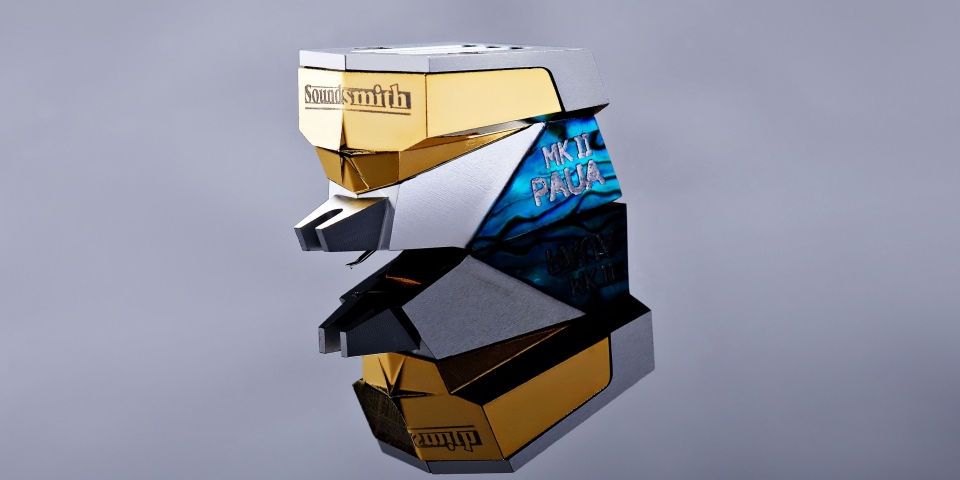
The top plate now features three grooved areas into which can be fit a pair of half-round Alumina rods that act as insulators should your installation produce a ground loop hum. A third round rod can be fitted into the center grooved area and used as a fulcrum to set azimuth on arms that don’t offer that adjustment.

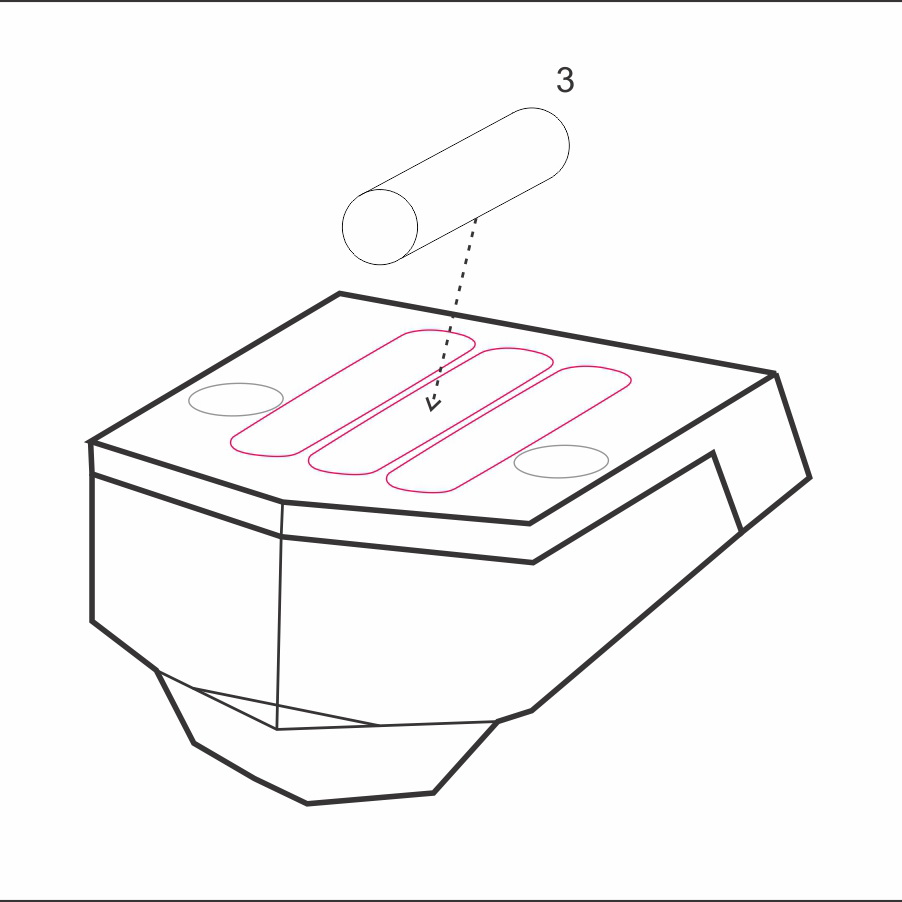
Performance specs are: frequency response is claimed to be 20Hz-20kHz ±1dB, channel separation is rated at > 34dB at 1kHz and > 25dB from 50Hz-15kHz. Channel difference is rated at < 0.5dB. These are impressive claims. Clearly these specs tell you that this moving iron cartridge has the low output of a typical moving coil cartridge and a recommended minimum load that’s 100X lower than a moving magnet cartridge’s fixed 47kOhm recommended loading.
The MK II edition of this cartridge, the original version of which has been in production for many years, features a newly developed aluminum alloy cantilever that’s stiff in areas where it needs to be while being critically damped in others. Speaking of stiff, while the $3999.95 price may seem stiff, consider this: when your stylus wears out, say at around 1000 hours depending upon your stylus and record hygiene and your set-up skills, a rebuild will cost you but $550. So, think of the total cost of a double dose of Paua Mk II as costing around $4500. A typical MC cartridge rebuild price is around half of retail so a $3995 MC double play will cost around $6000. The Paua Mk II comes with a two year warranty to the original owner.
Set Up
I mounted the cartridge—hand built by Mr. Ledermann as are all of this model and others)— on the new Kuzma Safir 4 Point tonearm, ideal for a low compliance cartridge (a full review will appear soon in The Absolute Sound). With the arm parallel to the record surface, I measured 93 degree SRA, which is about ideal if you factor in about a degree to account for dynamic performance. The channel balance with the head shell parallel to the record was within .5dB as spec’d. That doesn’t often happen with many cartridge brands. It does with a few like Ortofon.
Normally I use a digital oscilloscope to check channel separation and using it I measured 30dB L-R and 29.5 R-L. This method, while perfectly adequate to adjust azimuth, often shortchanges the actual separation measurements, which is one reason Ledermann recommends using a voltmeter. However, I find that the voltmeter almost consistently shows an additional 3-5dB separation improvement, and it did here. I measured 35dB and 34.5dB. That’s about as good as it gets.
The horizontal and vertical resonant frequencies occurred at 8 Hz, just within the desired 8-12Hz range measured using the Hi-Fi News test record. Paua Mk II also proved to be a tracking champ. Using the Ortofon Accuracy in Sound test record and tracking at 1.9 grams the cartridge sailed through the 90µm peak test band and indicated a barely perceptible mistracking on the 100µm track—that is the best tracking performance I’ve ever measured here! The best moving coils do 80µm, though few if any records of music require even that much tracking acumen. Still, it’s nice to know you’ve got tracking in reserve.
What accounts for this superb measured performance? Much of it has to do with the cantilever/moving iron assembly's low mass. The lower the mass the more responsive the stylus/cantilever assembly will behave in the grooves. The Soundsmith website goes over all of this in great detail.
Smooth Yet Detailed, “Come on In” Sound
Warm and inviting sounding cartridges are generally not my preference. Once I hear the warmth I cannot not hear it and it becomes an annoyance. The Paua Mk II’s canny voicing manages both a kiss of warmth on bottom through the lower midrange that’s inviting but not distracting combined with a smooth, open, but not too forward midrange and among the most natural sounding, extended high frequencies you’ll hear from any cartridge, combined with cleanly rendered high frequency transients that were precise, non-mechanical sounding and never gritty unless they were so in the recording. That’s a mighty pleasing sonic palette that delivers well for most musical genres.
I’m starting a new “which pressing is best” site feature where you’ll be able to blind compare hi-res files. Before I remove and return this cartridge, I’m going to use it to compare three versions of Derek and The Dominoes’ Layla you’ll be able to compare the three and hear what a great job this cartridge does on drums, drum-related transients (snares, cymbals), bass guitar and wailin’ electric too.
There are so many great Vox box sets available for “cheap”. These were budget sets but often superbly produced and mastered. One of my faves is Francois Couperin (VOX SVBX 5448) a 3 LP set on which Alan Curtis plays a Blanchet harpsicord made during Couperin’s lifetime and according to the annotation the composer may very well have played it. There are no engineering credits other than that it was recorded with “Dolby S/N Stretcher”. The 1969 release has been here since 1969 when an audiophile salesman at Minuteman Records and Tapes in Harvard Square where I worked recommended it to me. Glad he did!
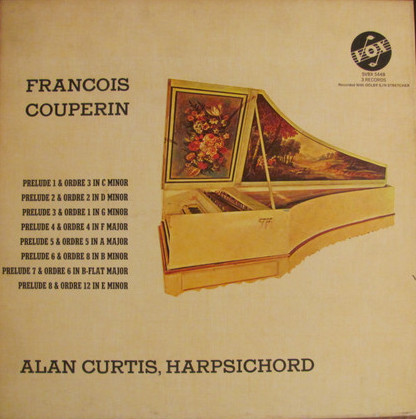
So open, spacious and clean, it sounds like something Marc Aubort might have recorded. With 34dB channel separation available the Paua MKII’s soundstaging on this record produced an impressive sense of space in which was a precisely placed, convincingly transparent sounding harpsicord. More important than the rendering of space and instrument was the transient precision—the natural attack, generous sustain and natural decay. Had this cartridge overemphasized the “room sound” or softened the transients as some “warm, smooth” cartridges do in service of “pleasant and non-offensive”, it would have greatly diminished the listening pleasure. Great record. On Discogs for under $10.00.
How about Oscar Peterson & Nelson Riddle (Verve V6-8562) recorded at Radio Recorders in 1963? The trio (O+ Ray Brown, Ed Thigpen) with 10 celli, 5 horns, 5 flutes, a harp and additional percussion all arranged by Riddle is drawing room splendor— Peterson lays down the cleanly rendered arpeggios almost Liberace style— through the Paua Mk II it was rich, but not overly ripe, with Brown’s bass lines deeply and precisely drawn. This record was made for the cartridge.
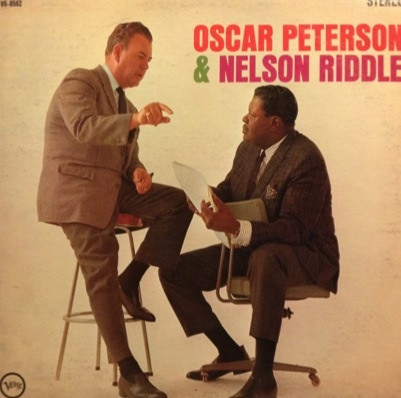
Johnny Hartman’s I Just Dropped By To Say Hello (ORG 027 double 45) called. I haven’t played it in years but something about this cartridge reminded me of that album and I’m glad it did! It’s another 1963 recording, this one by RVG. Hartman is center stage thrillingly “there” in 3D, vocal sibilants smoothly and naturally rendered, head and chest balance presented effortlessly. The cartridge’s microdynamic response breathes life into the vocals and into Illinois Jacquet’s tenor sax. Every record played produced exceptionally black backgrounds as Soundsmith promises in the online literature and confirming the test record, the Paua Mk II tracked everything I played.
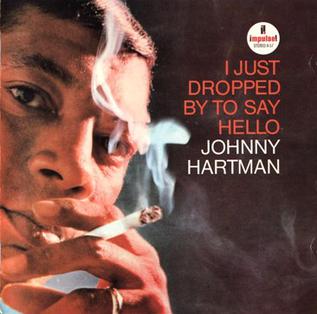
Jeff Beck died yesterday, can’t believe it, so finally for this review I played a second UK pressing of Truth (SCX 6293) and the overall presentation was masterfully well-balanced, but here I’d like a bit more sizzle to Jeff’s string bending and more weight to Ron’s bass. At the end of “Shape of Things”, there’s a bass blast that needed a bit more “hit you in the gut” punch as the song extinguishes itself in the shimmer, but the bass articulation, punch and “tunefulness” on “Let Me Love You” was a side one highlight as was the surprising clarity of Nicky Hopkins’ piano on “Morning Dew”. Throughout the album a few things disappointed but more of it produced pleasant surprises, particularly in the lower midrange area—Wood’s bass line on “You Shook Me” in particular, but Jeff’s guitar needed more “rudeness”. Rod sounded as “there” as Hartman did throughout. “Ol’ Man River” on the other hand was spectacular: deep, atmospheric and studio-mysterious. Beck’s bass lines doubled by organ were a closing side highlight. Bye, bye, Jeff Beck, you’ll live on, on record!
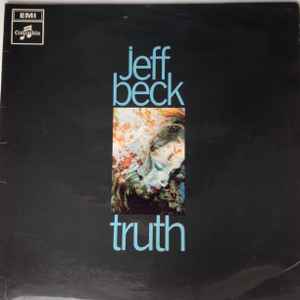
Conclusion
With its agreeable timbral balance, exceptional tracking abilities, unerringly natural transient performance, microdynamic finesse, expansive soundstage and a “quiet-in-the-groove” non-mechanical delivery, the Soundsmith Paua Mk II stands out among the participants on the crowded $4000 cartridge stage. It shares the pleasantries with a few others but exhibits a more aggressive stance when it’s called for and its resolution of low-level detail, in great part because it’s so quiet coursing through the grooves, is exceptional and a quality usually found at the very top of cartridgedom (did I invent a word?). It's not the fastest kid on the block though.
Unless you are a 100% rock and roll kind of listener, in which case there are some more aggressive candidates that might make you happier, the Soundsmith Paua Mk II should definitely be on your shopping list, especially if you keep in mind its outstanding build quality and the $550 re-tip price. Think of it not as a $3995 cartridge but rather as two for $2272 apiece. That only works if you still like it when the first one’s time is up, but I’m thinking if you like it when new, you’ll keep liking it when it’s time to put it out to pasture and your cost for the second one is $550. There’s nothing out there for $550 like the Paua Mk II. That’s for sure!
Specifications
Type: | • Fixed Coil / Moving Iron |
Mount: | • Standard ½” |
Stylus: | • Contact Line, Nude, 0.10 mm square |
Radius of Curvature: | • Nude Contact Line SELECTED |
Cantilever: | • Telescoping Aluminum Alloy |
Recommended Tracking Force: | • 1.7 - 1.9 g |
Effective Tip Mass: | • 0.30 mg |
Compliance: | • 10 µm/mN |
Frequence Response: | • 20 - 20,000 Hz ± 1.0 dB |
Channel Separation @ 1000 Hz: | • > 34 dB |
Channel Separation @ 50 - 15,000 Hz: | • > 25 dB |
Channel Difference: | • < 0.5 dB |
Output Voltage @ 5cm/sec: | • > 0.40 mV (LOW) |
DC Resistance (DCR): | • 10Ω |
Coil Inductance per channel: | • 2.75 mH |
Suggested Preamp Gain: | • 58 - 64 dB |
Cartridge Weight: | • 12.2 g (ES series) |
Recommended Load Resistance: | • ≥ 470Ω |
Recommended Load Capacitance: | • n/a |











































